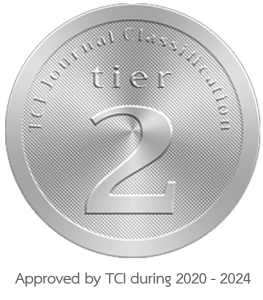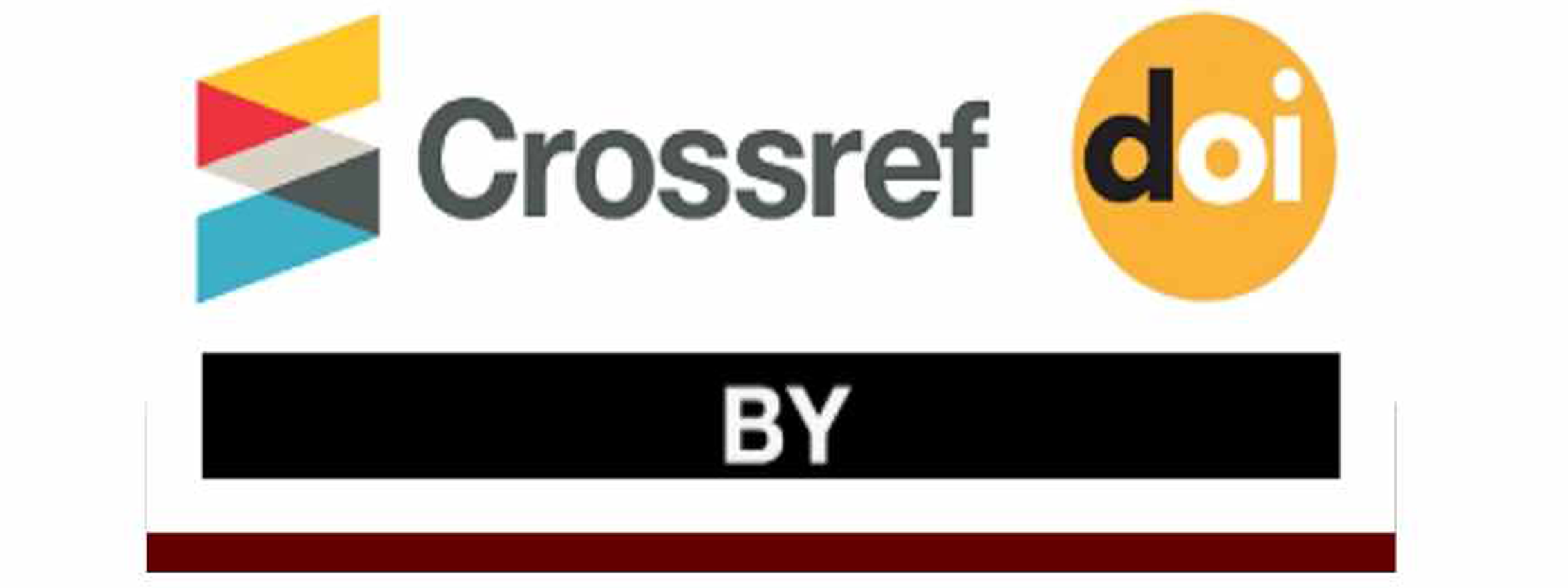The relationship between language learning strategies and achievements in English for undergraduate nursing students at a private university
DOI:
https://doi.org/10.62819/jel.2025.810Keywords:
English for nursing purposes, language learning strategies, Thai nursing students, proficiency levelAbstract
This study investigated the use of English language learning strategies (LLS) among Thai undergraduate nursing students and compared LLS usage across three proficiency levels. It also examined the relationship between LLS usage and achievements in English for Nursing Purposes (ENP). The sample consisted of 170 fourth-year nursing students selected through purposive sampling. The study adopted the Strategy Inventory for Language Learning (SILL) questionnaire developed by Oxford (1990) to collect data. Descriptive statistics were used to describe the frequency of LLS usage, with one-way ANOVA to determine differences in LLS usage across proficiency levels. Additionally, Pearson’s product-moment correlation coefficient was employed to explore the relationship between LLS usage and ENP achievements. The results showed that overall, students used LLS at a moderate level, with a significant correlation at p < 0.05, and memory strategies were employed the most frequently. There was a difference in LLS usage among high, moderate, and low achievers in ENP writing and speaking achievements. Furthermore, the findings revealed a positive relationship between the overall use of LLS and ENP writing achievements.
References
Ahmadishokouh, A., & Derikvand, A. (2015). Esp vs EFL; The case of learning strategy use in an Iranian context. International Journal of Language and Linguistics, 3(6), 440–447.
Ahmed, R. B. A., & Al-Enezi, E. H. (2023). An ESP approach to teaching nursing students the quality of clinical nursing notes writing. British Journal of Education, 11(7), 70–95. https://doi.org/10.37745/bje.2013/vol11n77095
Akbari, Z. (2015). Current challenges in teaching/learning English for EFL learners: The case of junior high school and high school. Procedia: Social and Behavioral Sciences, 199, 394–401. https://doi.org/10.1016/j.sbspro.2015.07.524
Al-Khresheh, M. H., & Al-Ruwaili, S. F. (2020). An exploratory study on vocabulary learning strategies used by Saudi EFL learners. Journal of History Culture and Art Research, 9(2), 288–302. https://doi.org/10.7596/taksad.v9i2.2616
Basturkmen, H. (2006). Ideas and options in English for specific purposes. Lawrence Erlbaum Associates, Incorporated Publishers.
Bosher, S. (2006). ESL meets nursing: Developing an English for nursing course. In M. A. Snow & L. KamhiStein (Eds.), Developing a new course for adult learners (pp. 63–98). TESOL.
Bosher, S. (2011). Acquiring discipline specific literacy in a second language: A case study of an ESL nursing student. Taiwan International ESP Journal, 2, 17–48. https://doi.org/10.6706/TIESPJ.2010.2.2.2
Celik, B., Yildiz, N., Mart, C. T., & Bingol, M. A. (2014). The significance of ESAP (English for Specific Academic Purpose) needs analysis for subject instructors in engineering faculty (Ishik University, Iraqi case). Journal of Educational and Instructional Studies in the World, 4(4), 57–63.
Chamot, A. U. (2004). Issues in language learning strategy research and teaching. Electronic Journal of Foreign Language Teaching, 1, 14–26.
Chan, M. L. (2014). Language learning strategies of Macao nursing students: An embedded mixed methods study. Asian Englishes, 16(3), 189–208. https://doi.org/10.1080/13488678.2014.919796
Chanaroke, U., & Niemprapan, L. (2020). The current issues of teaching English in Thai context. EAU Heritage Journal, 10(2), 34–45.
Chen, Y.-W., & Chiou, C.-P. (2010). Correlators of achievement in English for Medical Purposes among Baccalaureate nursing students. The Journal of Nursing Research, 18(1), 11–17. https://doi.org/10.1097/JNR.0b013e3181ce4fd9
Chetsadanuwat, K. (2018). Needs of English skills of Thai nurses working in international hospitals accredited by JCI in Bangkok area. Language Education and Acquisition Research Network Journal, 11, 26–46. https://so04.tci thaijo.org/index.php/LEARN/article/view/135868
Cohen, A. D. (1990). Language learning: Insights for learners, teachers and researchers. Heinle & Heinle Publishers.
Damanik, J. Y. (2022). Language learning strategies used by Indonesian learners in IELTS. Studies in English Language and Education, 9(1), 62–77. https://doi.org/10.24815/siele.v9i1.21448
Gylys, B. A., & Wedding, M. E. (1983). Medical terminology. Davis Company.
Hardan, A. A. (2013). Language learning strategies: A general overview. Procedia: Social and Behavioral Sciences, 106, 1712–1726. https://doi.org/10.1016/j.sbspro.2013.12.194
Hayati, N. (2015). A study of English language learning beliefs, strategies, and English academic achievement of the ESP students of STIENAS Samarinda. Dinamika Ilmu, 15(2), 297–323. https://doi.org/10.21093/di.v15i2.211
Hussin, V. (2008). Facilitating success for ESL nursing students in the clinical setting: Models of learning support. In S. Bosher & M. Dexheimer Pharris (Eds.), Transforming nursing education: The culturally inclusive environment (pp. 363–386). Springer.
Hutchinson, T., & Waters, A. (1987). English for specific purposes a learning-centred approach. Cambridge University Press.
Kachru, B. B. (1992). The other tongue: English across cultures. University of Illinois Press.
Khaleel Mohammad, A., & Alrefaee, Y. (2019). The relationship between language learning strategies and achievement among EFL university students. Applied Linguistics Research Journal, 3(3), 64–83.
Kiatkeeree, J., & Ruangjaroon, S. (2022). Unveiling the relationship between the grit of Thai English language learners, engagement, and language achievement in an online setting. LEARN Journal: Language Education and Acquisition Research Network, 15(2), 602–642.
Lee, C. Y. (1999). English for nursing purposes: A needs assessment for professional oriented curriculum design. Academic Journal of Kang-Ning, 1(1), 55–72.
Likitrattanaporn, W. (2018). A study of language learning strategies for practical use through the process of cooperative learning. International Journal of Educational Technology and Learning, 3(1), 35–44. https://doi.org/10.20448/2003.31.35.44
Mirza, H. S. (2015). ESL & EFL learners improve differently in pronunciation: The case of Lebanon. Procedia: Social and Behavioral Sciences, 199, 486–495. https://doi.org/10.1016/j.sbspro.2015.07.536
Monereo, C., Castelló, M., Clariana, M., Palma, M., & Lluïsa Pérez, M. (2001). Teaching strategies in education. Editorial GRAO.
Naranong, A., & Naranong, V. (2011). The effects of medical tourism: Thailand’s experience. Bulletin of the World Health Organization, 89(5), 336–344. https://doi.org/10.2471/BLT.09.072249
Noprival, N., & Alfian, A. (2024). Language learning strategies used by Indonesian English for medical purposes students in higher education. Learning: Research and Practice, 10(2), 219–232. https://doi.org/10.1080/23735082.2024.2317829
Nor Puteh, S., & Nor Mohamad, A. F. (2017). A corpus-Based evaluation on two different English for Nursing Purposes (ENP) course books. Advances in Language and Literary Studies, 8(2), 196–201.
Nurakhir, A., & Palupi, F. N. (2018). Exploring ESP needs of undergraduate nursing students in a university in Indonesia. Advances in Social Sciences Research Journal, 5(7), 77–85.
O’Malley, J. M., & Chamot, A. U. (1990). Learning strategies in second language acquisition. Cambridge University Press.
Oxford, R. L. (1990). Language learning strategies: What every teacher should know. Heinle.
Oxford, R. L., & Burry-Stock, J. A. (1995). Assessing the use of language learning strategies worldwide with the ESL/EFL version of the strategy inventory for language learning (SILL). System, 23(1), 1–23.
Oxford, R. L., & Ehrman, M. E. (1995). Adults’ language learning strategies in an intensive foreign language program in the United States. System, 23(3), 359–386.
Palaleo, J. J. P., & Srikrajang, J. (2018). English anxiety among Thai nursing students of Boromarajonani College of Nursing, Nakhon Lampang, Thailand. Asian Journal for Public Opinion Research, 5(3), 250–265. https://doi.org/10.15206/ajpor.2018.5.3.250
Rardprakhon, J., Brudhiprabha, P., & Angkanurakbun, R. (2016). Language learning strategies used by Thai engineering freshmen with different English academic achievement levels. HRD Journal, 7(2), 118–127.
Sartika, D. H. M., Santihastuti, A., & Wahjuningsih, E. (2019). The learning strategies used by EFL students in learning English. IJEE (Indonesian Journal of English Education), 6(1), 10–20. https://doi.org/10.15408/ijee.v6i1.12111
Strevens, P. (1988). ESP after twenty years: A reappraisal. In Tickoo (Ed.), ESP: State of the Art, M. l. (pp. 1–13). S.E.A.M.E.O. Regional English Language Centre.
Su, M. (2005). A study of EFL technological and vocational college students’ language learning and their self- perceived English proficiency. Electronic Journal of Foreign Language Teaching, 2(1), 44–56.
Sukavatee, P., & Khlaisang, J. (2023). A survey of research into English teaching approaches and instructional media in Thailand. Learn. Journal, 16(2), 752–769.
Sukkrong, J., & Yordchim, S. (2017). English learning strategies of students at Nakhon Si Thammarat Rajabhat University. Research and Development Journal Suan Sunandha Rajabhat University, 9(2), 90–99. https://doi.org/10.53848/irdssru.v9i2.214226
Sukying, A. (2021). Choices of language learning strategies and English proficiency of EFL university learners. LEARN Journal: Language Education and Acquisition Research Network, 14(2), 59–87. https://so04.tcithaijo.org/index.php/LEARN/article/view/253261
Syafryadin, S., Wardhana, D. E. C., Noermanza, N., Rofi’I, A., & Awalludin, A. (2022). Students’ perspective and problems in implementing higher order thinking skill (HOTS) in speaking for presentation class. Journal of Language and Linguistic Studies, 18(1), 477–487.
Taheri, H., Sadighi, F., Bagheri, M. S., & Bavali, M. (2020). Investigating the relationship between Iranian EFL learners’ use of language learning strategies and foreign language skills achievement. Cogent Arts and Humanities, 7(1), 1–38. https://doi.org/10.1080/23311983.2019.1710944
Tavakol, M., & Dennick, R. (2011). Making sense of Cronbach’s alpha. International Journal of Medical Education, 2, 53–55. https://doi.org/10.5116/ijme.4dfb.8dfd
Widdowson, H., & G. (1983). Learning purposes and language use. Oxford University Press.
Wong, J. K. K. (2004). Are the learning styles of Asian international students culturally or contextually based? International Education Journal, 4(4), 154–166.
Wong, K. M., Velasamy, P., & Tengku Arshad, T. N. T. (2014). Medical tourism destination SWOT analysis: A case study of Malaysia, Thailand, Singapore and India. SHS Web of Conferences. EDP Sciences, 12, 1–8. https://doi.org/10.1051/shsconf/20141201037
Yang, M. N., & Su, S. M. (2003). A study of Taiwanese nursing students’ and in-service nursing professionals’ English needs. Journal of Chang Gung Institute of Technology, 2, 269–284.



















